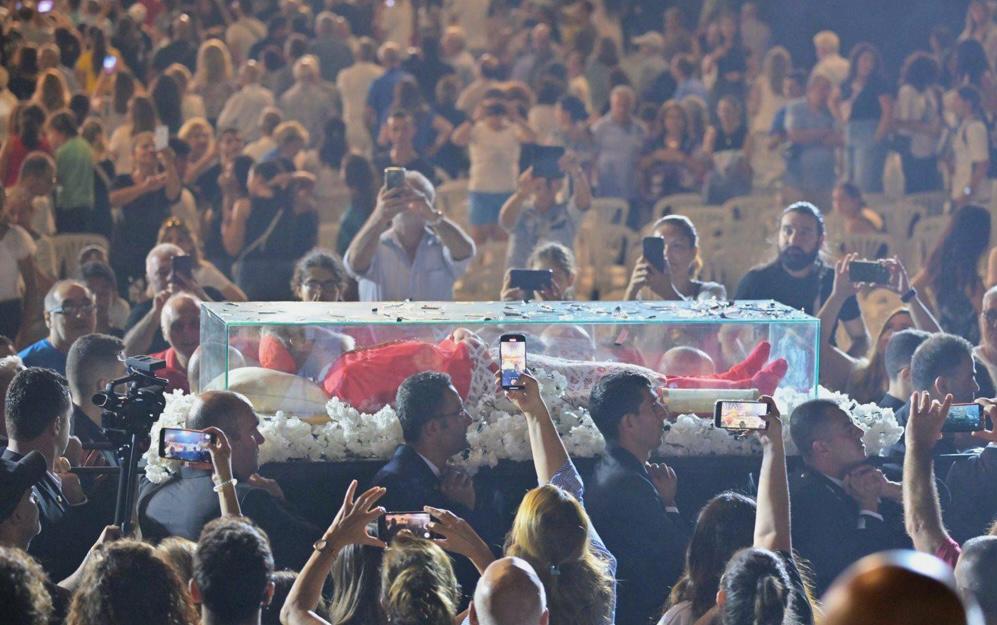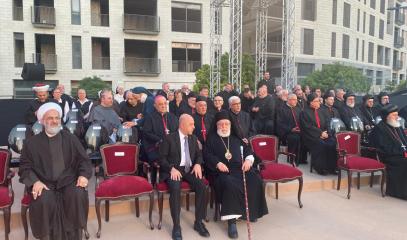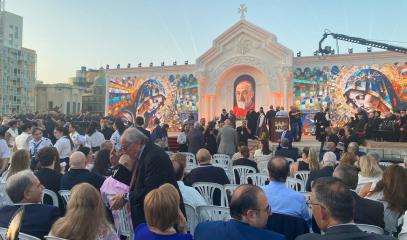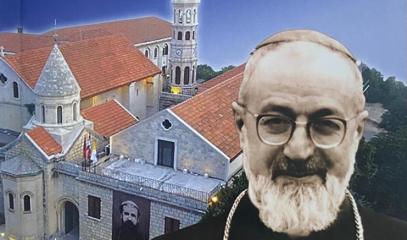Beirut: The translation of Patriarch Aghagianian amid hopes for peace and reconciliation
Thousands of faithful, ecclesiastical and political personalities witnessed the arrival of the remains of the cardinal, now buried in the cathedral of Saint Elias and Saint Gregory the Illuminator. The wait is on for the completion of the beatification process. From Prime Minister Mikati the hope that through his intercession, the country of the cedars will overcome the political and institutional crisis.
Beirut (AsiaNews) - In front of the astonished and incredulous gazes of several thousand Lebanese members of the Armenian community, gathered in Martyrs' Square in downtown Beirut, and of many civil and religious dignitaries, the Armenian Catholic Patriarch Raphaël Bedros XXI Minassian showed this “miracle of holiness”.
The still-preserved body of his predecessor and Cardinal Grégoire Pierre XXV Aghagianian (1895-1971), albeit without the embalming rite. Among the governmental and ecclesiastical authorities present yesterday evening were the interim Lebanese Prime Minister Nagib Mikati and the Maronite Patriarch, Card. Beshara Raï.
Transported directly from Rafic Hariri International Airport to Martyrs' Square, carried by men representing all confessions, the catafalque enclosed in a glass case inside which rest the patriarch's remains crossed the central corridor. On either side, long rows of chairs packed with worshippers, amidst clouds of incense and confetti.
Displayed during the ceremony at the centre of a stucco reproduction of the entrance portal of the Bzommar convent, seat of the Armenian Catholic Patriarchate in Lebanon, the body was transferred at the end of the service to the cathedral of Saint Elias and Saint Gregory the Illuminator, not far away.
No further ceremonies for public display of the body are currently planned, pending the favourable conclusion of the beatification process. To date, the deceased cardinal is ‘simply’ considered a venerable, or servant of God, by virtue of the canonical process opened in Rome in 2022, a title that awaits the man's ‘heroic virtues’ in any case.
The transfer took place at the express request of Card. Aghagianian himself, while he was still alive. Born in Georgia in 1895, he studied in Rome from a very young age and was a brilliant student. Over time, he was able to climb the ecclesiastical hierarchy, though never forgetting his Armenian origins and never being able to return to his native homeland, which in the meantime had become a Soviet Republic.
A naturalised Lebanese upon independence in 1943, while already been elected Patriarch of the Armenian Catholics, among his last wishes expressed in life was to be buried on Lebanese soil, in Bzommar. The cardinal led the Armenian Catholic Church between 1937 and 1962, before handing it over to freer hands to devote himself to the preparations for the Second Vatican Council.
Although no further expositions are planned, Patriarch Minassian has arranged for the tomb to be accessible to the faithful, after having personally worked for the exhumation from the previous burial place, a crypt in the Armenian church of St Nicholas of Tolentino in Rome.
This because as a young seminarian he himself had watched over the deceased cardinal, witnessing a mysterious phenomenon: sweat was perspiring from the lifeless body, but his superiors at the time had ordered him to ignore it. In silence, the current head of the Armenian Church carried the secret within him, thinking it was a sign from God, as confirmed by the exhumation in 2022, in view of the cause of beatification, with the remains still intact as a sign of holiness.
The Patriarch held many positions under the pontificates of Pius XII, John XXIII and Paul VI, including head of the dicastery for the Evangelisation of Peoples (Propaganda fide) between 1958 and 1970, as well as moderator during the Council. He was also responsible for many schools, churches, orphanages and dispensaries.
The ‘little flock’ that escaped genocide
He too was part of the ‘little flock’ that escaped the Armenian genocide of 1915 and chose Lebanon as his second homeland. A nation, as emerged also from Patriarch Minassian's words, that remains a land of holiness, of Islamic-Christian encounter, a ‘message of pluralism’ for East and West as Saint John Paul II used to say, despite the difficulties.
‘All Lebanese,’ said interim Prime Minister Mikati, ’hope that with the arrival of the mortal remains of Patriarch Aghagianian, a white smoke will rise from this region to announce the good news of the election of a new president of the Republic.
It is from the cathedral of St. Elias and St. Gregory the Illuminator and from higher up, like Thérèse of Lisieux who promised to ‘spend my Heaven doing good on earth’ that Card. Aghagianian will help those who rely on his intercession.
She had promised this to those who came to her bedside in the last days of her life after losing their sight. ‘Now I can do nothing more for you,’ he said. ‘But God willing, I will be able to do so after death.’
‘Before taking his last breath,’ Patriarch Minassian ended with an anecdote, the cardinal uttered the words ’I am thirsty, as his Master [Jesus] did on the cross. And when he saw the glass of water being brought to him, he replied: ‘I thirst for your holiness’. This,' he concludes, “was also his last recommendation”.










.png)










